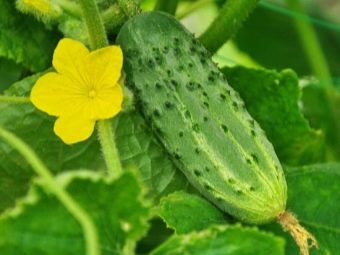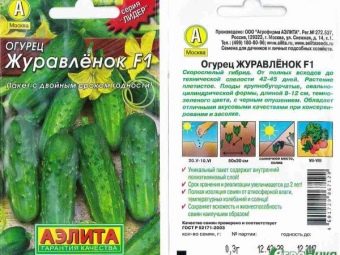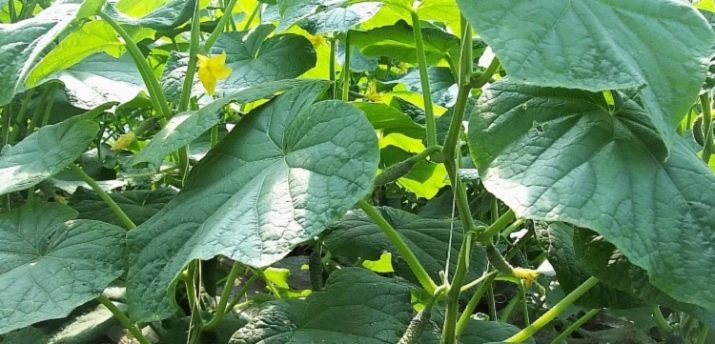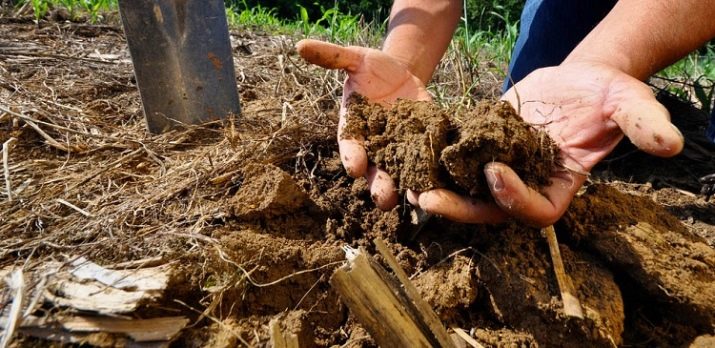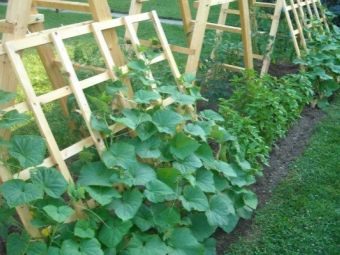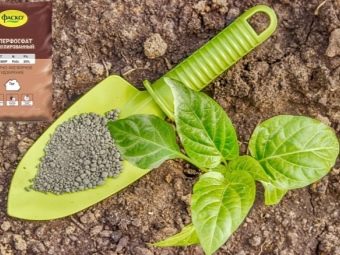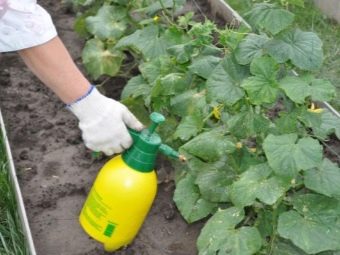Cucumber "Crane F1": features of the variety, cultivation and care
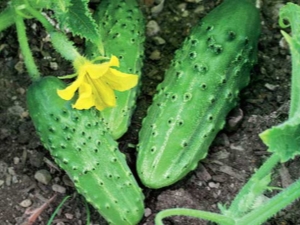
Cucumber "Crane F1" differs among other varieties of excellent taste.Eating fresh and pickled cucumbers increases appetite, helps the good absorption of other dietary fiber. Potassium is present in large quantities in fruits, due to which excess moisture is removed from the human body and the work of the heart is improved.
Characteristic
Variety "Crane F1" is known since 1996. It can be grown in open ground in warm climatic zones of Russia. In the middle latitudes of the country, cucumbers grow in greenhouses, and gardeners also receive a bountiful harvest. "F1 crane" refers to the early ripe hybrid varieties of cucumbers. The period from mass shoots to the first fruits is 42-47 days. Cucumber plant has a high main stem with a length of 165-185 cm, numerous lateral whips depart from it.
The variety has a rich ovary. Zelentsov has attractive taste qualities. They have the correct shape (length 10-13 cm), diameter - 3.5-4.5 cm, weight - 85-115 g. On the surface of the cucumbers there are large tubercles and numerous black spikes. The skin is thin, with small white stripes. The fruits of this variety are characterized by excellent taste properties: sweet, delicate, crunchy. They are used for canning, you can also prepare a delicious salad.
Benefits
In one leaf sinus is formed from three to five cucumbers. Fruiting continues at lower autumn temperatures. Cultivar "Crane F1" has a yield of 7.5 to 9.5 kg per 1 square. meter. This variety is distinguished among others, as it has several advantages:
- little susceptible to fungal and bacterial plant diseases;
- has excellent taste properties;
- salad vegetable, well preserved in canned form;
- high yield;
- early maturing
- can be grown in open ground and in greenhouses;
- low cost of seeds.
The hybrid has almost no negative reviews. One has only to note that for the growth of cucumbers it is necessary to provide enough space.
How to achieve high yield?
For cucumber plants, the following conditions should be observed: heat in the soil and in the air, moisture and light. They like well warmed up areas. Normal plant growth is possible at an average daily ambient temperature above 15 degrees. Cucumbers do not tolerate through and strong wind. This culture can be grown in the open field, for this plant erect a special shield from the wind and drafts.
Site selection for planting
Cucumbers grow comfortably on loamy soils that have excellent air and water permeability. Before planting it is necessary to introduce organic humus. High yield of cucumbers of this variety is obtained on flood and chernozem soils, dried peat lands. If you follow the agrotechnical cultivation of this crop, you can achieve good results on clay soils and sands.
To facilitate the heavy clay soil in the autumn period make sawdust, deciduous humus. In the moors you need to add lime before planting. It is good to carry out digging with fresh manure (4-6 kg per 1 sq. M) in all types of soil annually. Thanks to the introduction of organic fertilizers, the nutrition of cucumber plants is improved. Gardeners, it is important to monitor what kind of crop was planted in front of cucumbers.
You can not plant them if the predecessors were pumpkin plants. It is recommended to annually change the plot for planting cucumbers. This reduces the risk of disease, protects against pests.
Planting seeds
In the middle latitudes of Russia, seeds of this variety are planted in the ground, when all frosting dangerous for plant life ceases. Soil temperature should be up to 16-19 degrees during the day and up to 9 degrees at night. The first shoots appear 4-6 days after planting. A special material, a film or a special fiber, can protect from short-term cold spells that have not yet become strong.
You can make holes in which fertilizer is pre-applied, or plant cucumbers in rows. To get a good harvest, plants should be planted at a distance of 8-10 cm.Seeds are buried by 2-4 cm. Up to eight cucumbers are planted in the hole, then (with the appearance of three true leaves) the two best plants are thinned and left.
Care
The soil around the plants is loosened and spud. This technique allows the plant to form good roots. Loosen the soil carefully, so as not to damage the immature root system. Around the stem leave 3-4 cm when loosening. During the intensive formation of cucumber lash, the protective zone is increased to 10 cm. Care for cucumber plants includes regular weeding. Gardener continuously monitors the temperature indicators of the environment - soil, air.
Cucumber lashes are most often hung on constructed supports, due to which the plants rationally use sunlight. Cucumbers are not polluted in the rain, they are easier to collect, plants are less likely to suffer from diseases.
In order to accelerate the ripening of the fruit, a stalk is removed above the fourth leaf.
Top dressing
To increase the yield of the cultivar "Crane F1" several times during the season they feed the plants. For these purposes, diluted mineral fertilizers are used. The need for nitrogen, potassium and phosphorus depends on the vegetation phase.
- First fertilizer application carried out before the formation of the fourth true leaf. Superphosphate is introduced at the rate of 25-35 g per 1 sq. M. m. Timely fertilization contributes to the maximum development of the roots.
- The second time making minerals must be done during the period of intensive growth of leaves, lashes. Fertilizers are applied during irrigation (nitrogen and potash). Pre-evening carry out watering plants with warm water.
- Third fertilizer application carried out during the flowering of cucumber plants. In the morning, the plants are watered with nitrogen and potash fertilizers (the dose is increased for nitrogen by one and a half times, and for potash fertilizers by half).
Harvest
Cucumbers are harvested daily. They should not be overgrown, yellowed or whitened. The fruit is carefully removed from the plant. Gather cucumbers usually in the morning and evening hours.
How to increase the yield of cucumbers, see the following video.

